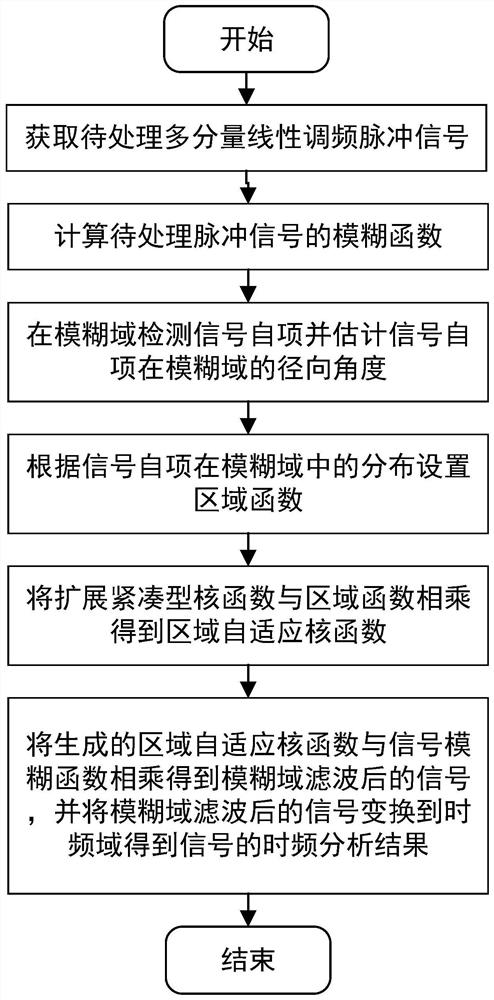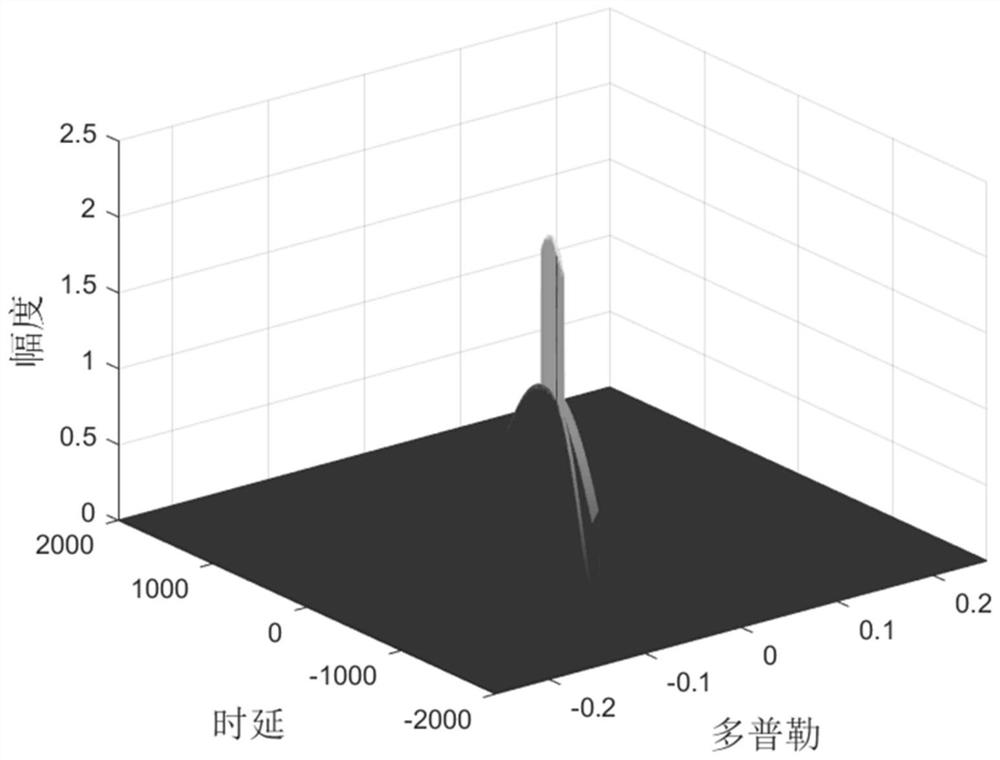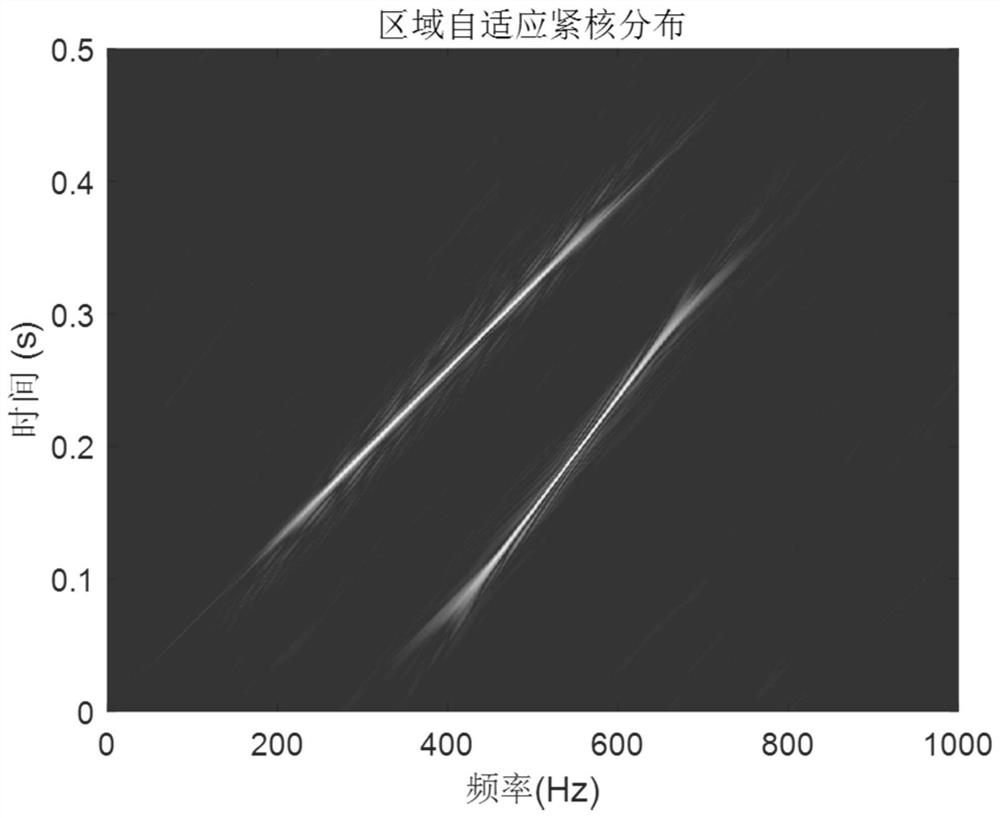Multi-component linear frequency modulation signal time-frequency analysis method based on regional kernel function
A chirp signal, time-frequency analysis technology, applied in the field of signal processing, can solve the problem that the time-frequency distribution is not optimal
- Summary
- Abstract
- Description
- Claims
- Application Information
AI Technical Summary
Problems solved by technology
Method used
Image
Examples
Embodiment 1
[0162] The simulation signal parameters are set as follows: signal amplitude A=1, number of sampling points N=2048, initial signal frequency is f l1 = 400Hz and f l2 =200Hz, sampling frequency f s =4000Hz, the modulation rates are: 1.2kHz / s and 1.6kHz / s respectively, the pulse width length is 0.25s, and the signal start times are 0.0625s and 0.125s respectively. Additive white Gaussian noise with a signal-to-noise ratio of 5dB is added to the signal.
[0163] First, calculate the fuzzy function A of the signal data s(a) to be processed z (m,n).
[0164] Then, calculate the blur function A z (m,n) discrete Radon transform R(θ p , d q ).
[0165] Next, estimate the radial angle, radial length, and normal width of the self-term to obtain φ 1 = 74°, r 1 '=0.3226,l 1 '=0.0144. φ 2 = 68°, r 2 '=0.3433, l 2 '=0.0044.
[0166] Then, set the area function B k (m,n), will expand the compact kernel function g(m,n) with the area function B k (m,n) multiplied to get the re...
Embodiment 2
[0169] The simulation signal parameters are set as follows: signal amplitude A=1, number of sampling points N=2048, initial signal frequency is f l1 = 400Hz and f l2 =550Hz, sampling frequency f s =4000Hz, the modulation rates are: 1.2kHz / s and -0.8kHz / s, the pulse widths are both 0.25s, and the signal start times are 0.0625s and 0.125s respectively. Additive white Gaussian noise with a signal-to-noise ratio of 5dB is added to the signal.
[0170] First, calculate the fuzzy function A of the signal data s(a) to be processed z (m,n).
[0171] Then, calculate the blur function A z (m,n) discrete Radon transform R(θ p , d q ).
[0172] Next, estimate the radial angle, radial length, and normal width of the self-term to obtain φ 1 = 102°, r 1 '=0.2711, l 1 '=0.0057. φ 2 = 74°, r 2 '=0.3075, l 2 '=0.0057.
[0173] Then, set the area function B k (m,n), will expand the compact kernel function g(m,n) with the area function B k (m,n) multiplied to get the region adapt...
PUM
 Login to View More
Login to View More Abstract
Description
Claims
Application Information
 Login to View More
Login to View More - R&D
- Intellectual Property
- Life Sciences
- Materials
- Tech Scout
- Unparalleled Data Quality
- Higher Quality Content
- 60% Fewer Hallucinations
Browse by: Latest US Patents, China's latest patents, Technical Efficacy Thesaurus, Application Domain, Technology Topic, Popular Technical Reports.
© 2025 PatSnap. All rights reserved.Legal|Privacy policy|Modern Slavery Act Transparency Statement|Sitemap|About US| Contact US: help@patsnap.com



